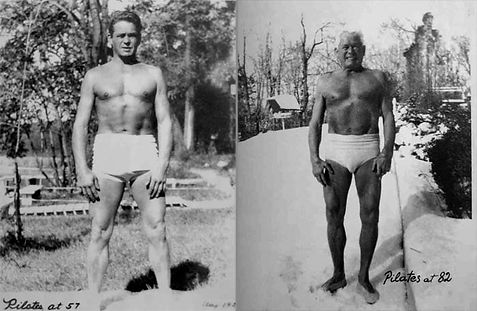Many people have heard of Pilates but are still unsure about what it is, so let me try and help by answering some of the Common Questions About Pilates that I get asked.
What Is Pilates?
“You can say what Pilates is in three words.
Stretch with Strength and Control.
And the control part is the most important because that makes you use your mind”
Romana Kryzanowska
The oxford dictionary defines Pilates as:
“A physical fitness system of exercises designed to improve physical strength, flexibility and posture and enhance mental awareness“
It was developed in the early 20th century by Joseph Pilates who believed ‘Physical fitness is the first requisite of happiness‘.
This all sounds serious and almost military, and for some that is what they want. However, it can be adapted to allow it to become accessible to almost everyone.
Pilates own interpretation of physical fitness was ‘the attainment and maintenance of a uniformly developed body with a sound mind fully capable of naturally, easily and satisfactorily performing our many and varied daily tasks with spontaneous zest and pleasure’.
Pilates can be done on a mat or on one of the many pieces of equipment developed by Joseph Pilates.
My person approach is to work with you, using the equipment (reformer, chair or tower), to find areas of imbalance and then strengthen and stretch the areas as needed.
So, Pilates was a person?
Yes, although Joseph called it ‘Contrology’ it was only after his death that this method of exercise became known as ‘Pilates’. Born in Germany he was reportedly working as a circus performer in England as WWI broke out and was interned on the Isle of Man. Upon the end of the war he returned to Germany before leaving for New York, it is on the ship over he met his wife Clara. They set up their studio in 1926 and the rest, as they say, is history.
As well as the exercises he was a prolific inventor of apparatus, the most common of which is the Reformer, but there is also the Wunda Chair, Cadillac, Foot Corrector, Toe Gizmo, Ped-O-Pull, Guillotine, High Chair, Ladder Barrel and Spine Corrector
Can anyone do it? I think I’m too…..to do Pilates?
Although many people first think of ballet dancers when they think of Pilates it really is an inclusive method of exercise that can be tailored to the client’s needs. This is especially true in a private class.
Pilates can be done in pregnancy and post-natal; by men (after all it was developed by a man); to aid recovery from an injury, many of Josephs early clients were injured dancers and one of his apprentices used the method to recover from breast cancer surgery; and a short google search will find a range of sports people and teams using Pilates as part of their training to aid recovery and to reduce injuries.
In a private session, like those offered at Fascial Soul, the exercises can be tailored to your needs and taken at your pace.
I have had the pleasure to teach clients from 18-80 years old, male & female, those with long standing issues e.g. hypermobility or sudden onset back pain and those who are fit and pain free and want to stay that way.
I come from a very non sporty background and do not have the perfect Instagram Pilates body. My aim is to create an inclusive supportive space in the studio. Using verbal and tactile cues, and they equipment, we work to ensure correct form and movement. Yes there will be corrections to get the best out of that exercise for you but I want clients to feel happy and relaxed in the studio not judged.
In a group class it is down to the instructor to have you in the best group for your abilities.
Is it like yoga?
Yoga derives from ancient Indian culture and has philosophical and spiritual elements as well as the physical focus, many view it as a lifestyle. Whereas Pilates was developed by an individual and whilst having a mental aspect it is a physical workout. Depending on the teacher or style of yoga there can be an overlap. Using the equipment in the studio at Fascial Soul makes the work quite different from yoga.
Isn’t it just sit ups?
This one always amuses me. Pilates is so much more than sit ups. The core muscles are not just your ‘six pack’ but encompass all the stabilizing muscles of your core from your upper chest down to your inside thigh (I feel another blog post could be done on this alone).
If you do a mat class than yes, a small group of the exercises (called the abs series) do all look like modified sit ups to the outside observer. However, when performed correctly they are a whole-body exercise, stretching from head to toe.
However, using the equipment such as the reformer, chair and tower the focus can be taken away from the abdominals (though they will still be working) to other areas of concern for example foot function or shoulder stability.

